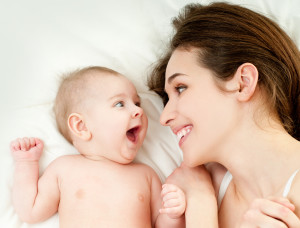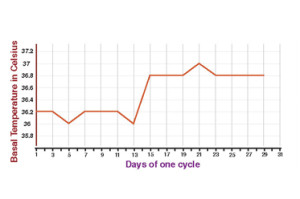
How Can Basal Body Temperature Charting Help Me?
If you are trying to fall pregnant now or in future, basal body temperature charting (BBT charting) will help you find out how healthy your hormones are and whether your ovulation is normal. By taking your temperatures everyday for your menstrual cycles, you can learn a great deal about how fertile you are and how likely you can fall pregnant.
Basal body temperature charting is natural, painless, and informative, and, even better, it’s free!
Of course, for conception to happen, both male and female factors have to be taken into account. Check out how to increase the chances of getting pregnant naturally.
Can BBT Charting Tell Me When I Am Fertile?
Yes, the BBT chart tells you when you ovulate, that is, when the egg is released. For conception to happen, you want sperm to be ready and waiting for the egg to be released. Sperm survive for about 5 days. An egg survives about 1 to 2 days. That means if you ovulate on day 14, you want sperm to be around from day 10 until about day 15 to maximise the chance of catching your egg. In other words, day 10 to day 15 would be your fertile window. That is when you should try to conceive.
What Does A Normal BBT Chart Look Like?
What Does The Chart Mean For My Fertility?
As you can see in the chart above, in a healthy menstrual cycle there are two clear-cut phases. The first phase is the follicular phase, where the temperatures are lower (below 36.5°C). This is the time where the follicles are developing until the point of ovulation.
Ovulation happens in the chart where there is a clear spike of your body temperature (Day 13 or 14 in this figure). This is when an egg in a follicle becomes mature enough to be released in preparation for conception.
The second phase is the luteal phase, where the temperatures are higher (>36.5°C). This is the time where the corpus luteum, a hormone-secreting structure, develops in order to prepare the uterine lining for implantation of the fertilised egg. If no conception occurs the corpus luteum degenerates and the next period begins.
The temperatures rise and fall according to specific hormones working in the particular phase of the menstrual cycle. They may also fluctuate due to factors such as infection, alcohol, late night, cold mornings, hot weather.
How To Do BBT Charting?
Measure your body temperature every morning when you wake up preferably around the same time. Use a digital thermometer as it shows decimal places. Leave the thermometer in the mouth or the armpit for 2 minutes to make sure you are getting the highest body temperature. Plot a graph with the Day of the Cycle as the horizontal axis and Body Temperature as the vertical axis. There are many phone apps that can help you with this.
What Does It Mean When The Chart Doesn’t Look Right?
If your hormones are working right and that ovulation occurs, the chart will look similar to the chart above, with 2 clear-cut phases and sharp rise in the middle.
These are the common abnormalities of the chart:
- The follicular (first) phase is too long (>16 days) or too short (<13 days);
- The temperatures of the follicular phase are too high (>36.5°C);
- There is no sharp rise around day 13 and day 15;
- The luteal (second) phase is too long (>16 days) or too short (<13 days);
- The temperatures of the luteal phase are too low (<36.6°C);
- The temperatures fluctuate too much.
Why May I Have An Abnormal BBT Chart?
If your BBT chart shows abnormalities listed here, it indicates that there may be:
- Hormonal imbalance
- Lack of ovulation
- Polycystic ovarian syndrome
- Menopause
- Menstrual irregularity
Acupuncture, Chinese medicine, hormonal treatments may be able to help alleviate some of the symptoms of these conditions.
Do you have more questions about temperature charting? Feel free to leave a comment or contact us on 0404 017 477 Roseville NSW, Australia.
Find out what environmental toxins affect your fertility from my next blog.
You Might Be Also Interested In
- Fertility Testing
- A Woman’s Age and Fertility
- 7 ways to boost male fertility
- Causes of Male Infertility
- Top foods to increase fertility
- The benefit of acupuncture for fertility
- Getting pregnant over 35
Jaime Kerr is a registered acupuncturist and Chinese medicine practitioner who has years of experience specialising in fertility/pregnancy support and pain management. She has helped many infertile couples fulfil their dream of becoming parents. Her gentle approach towards healing using acupuncture and Chinese medicine makes you feel safe and empowered. To contact her please call 0404 017 477 Roseville, NSW, Australia.




